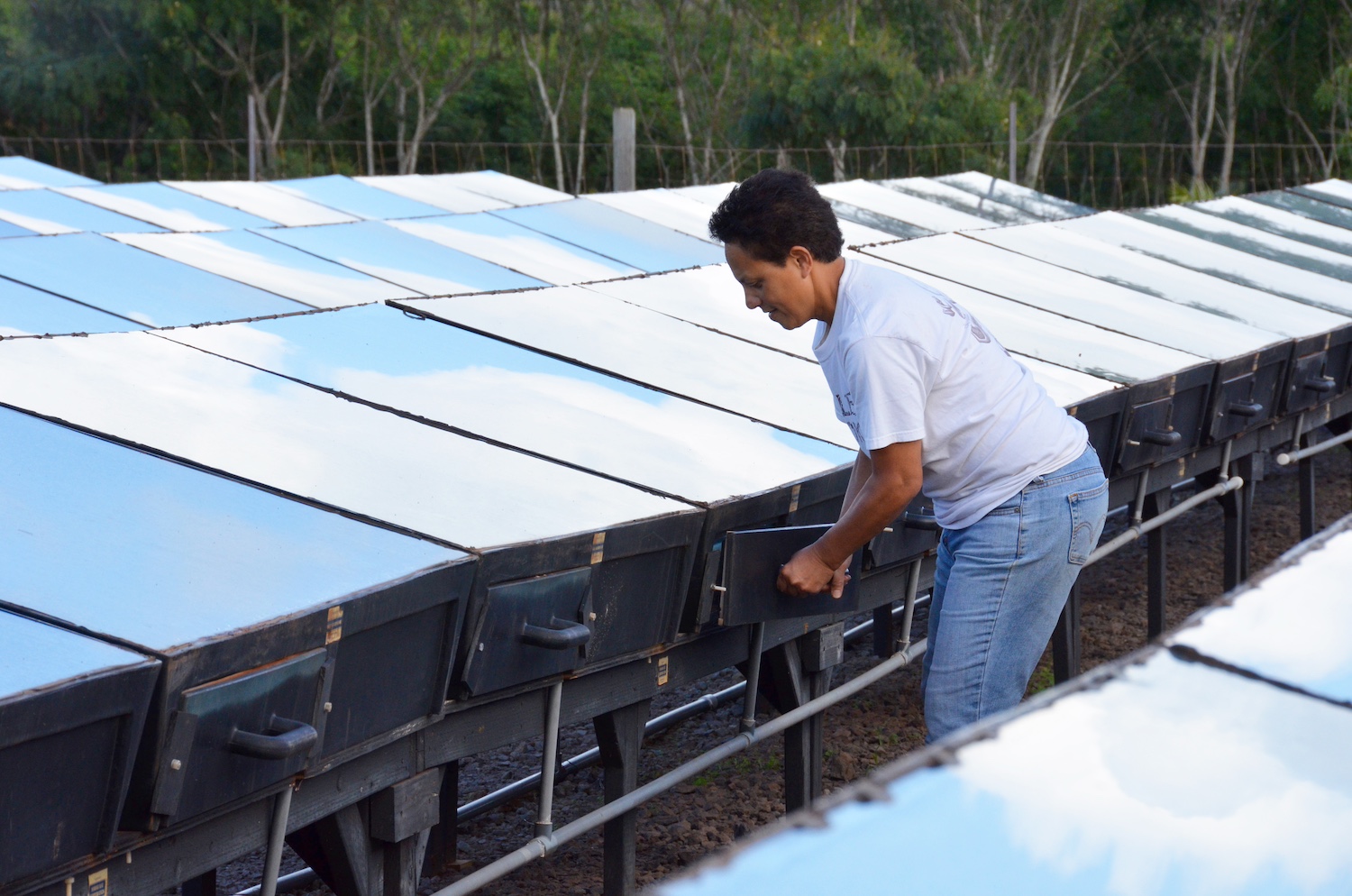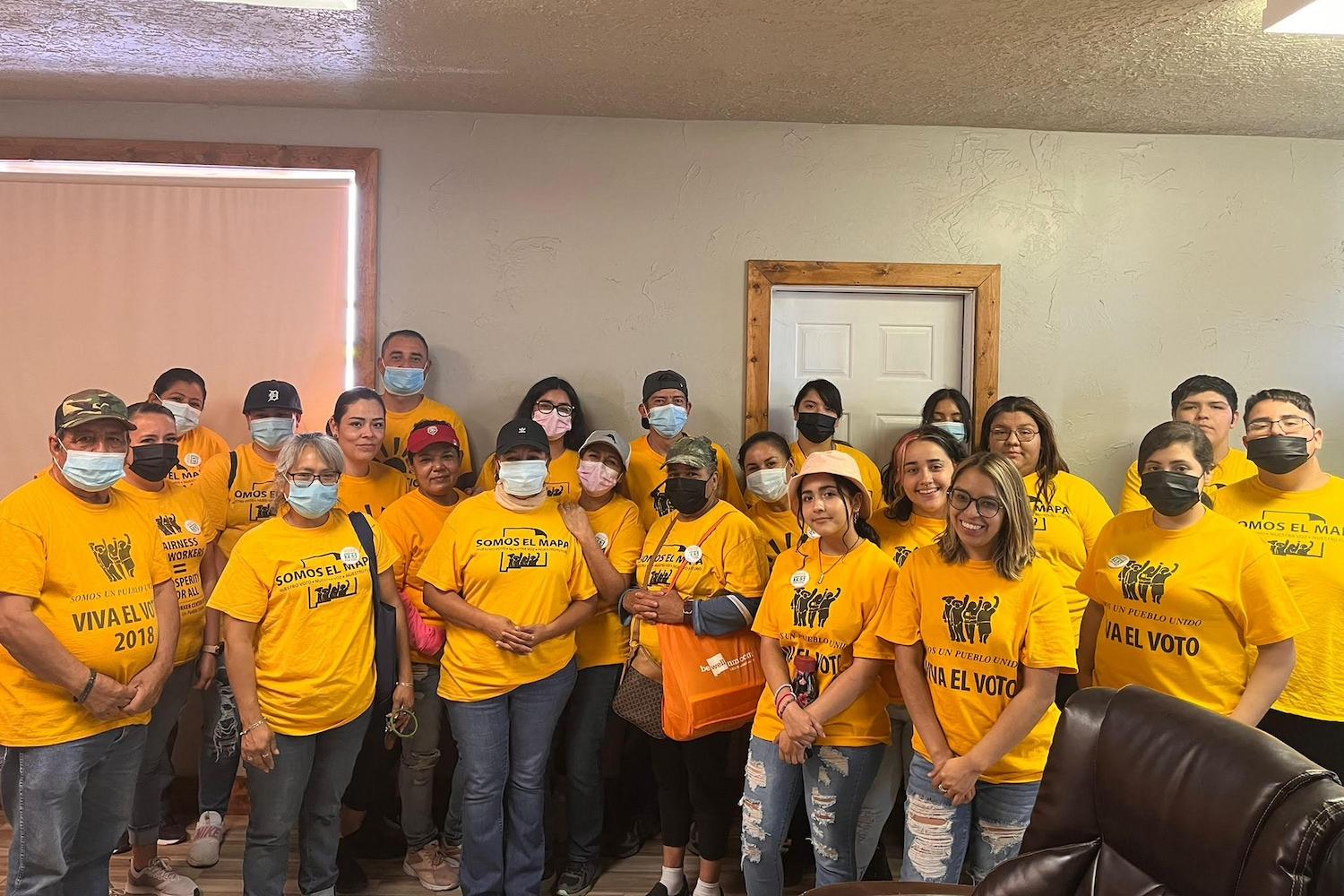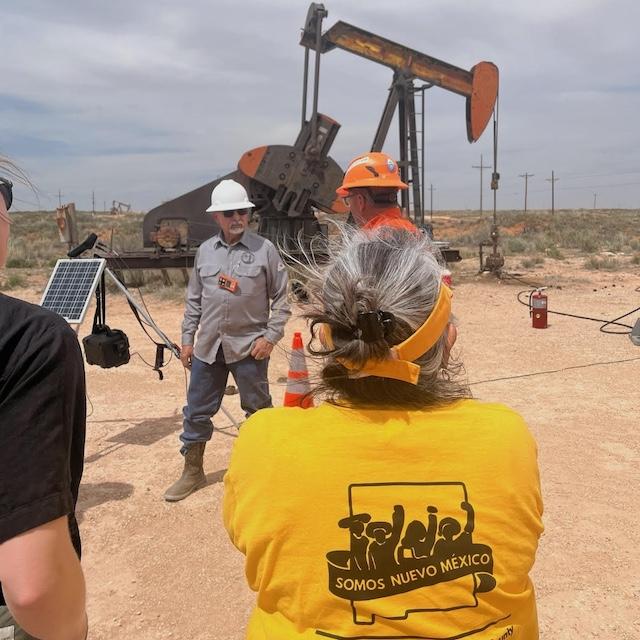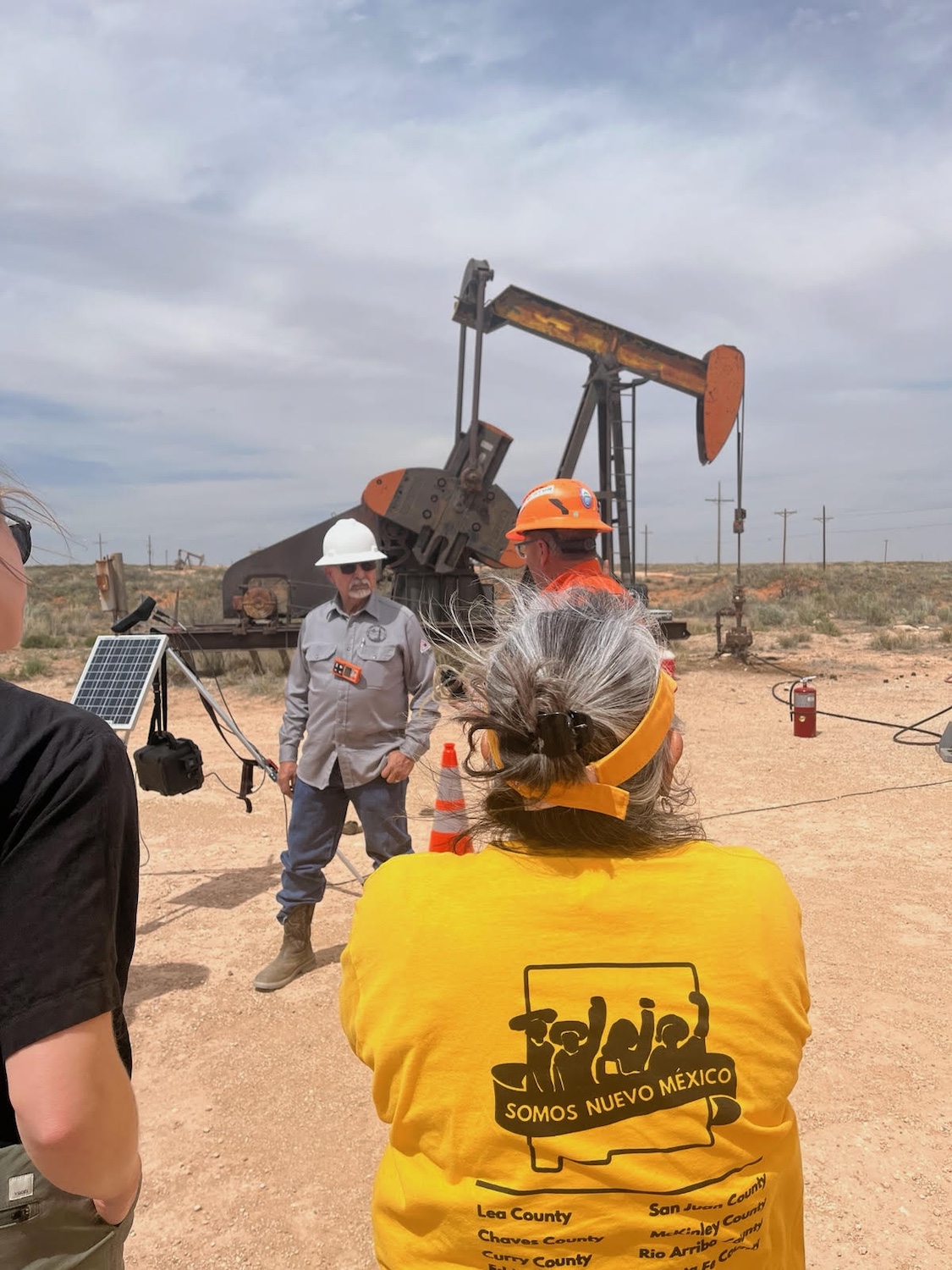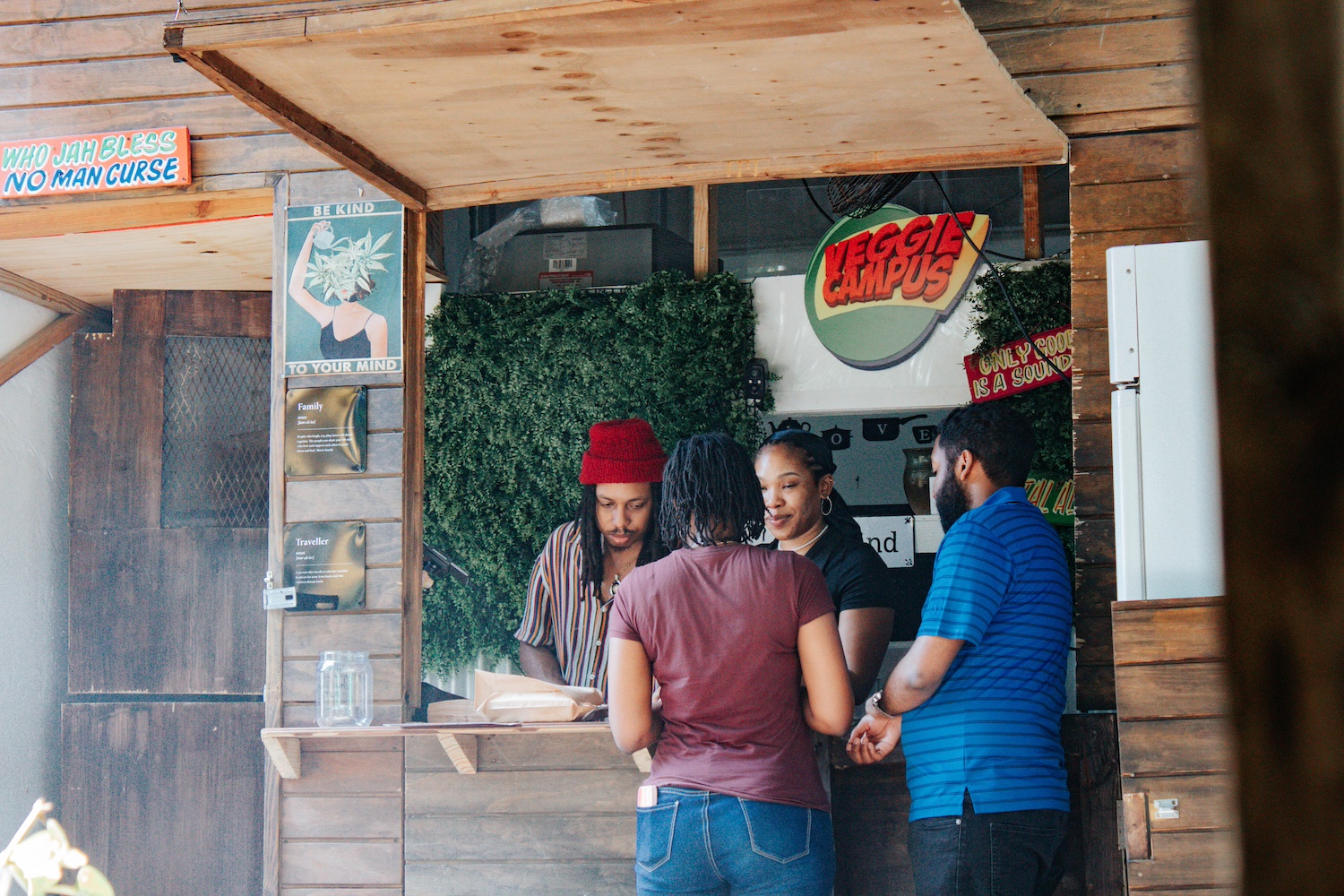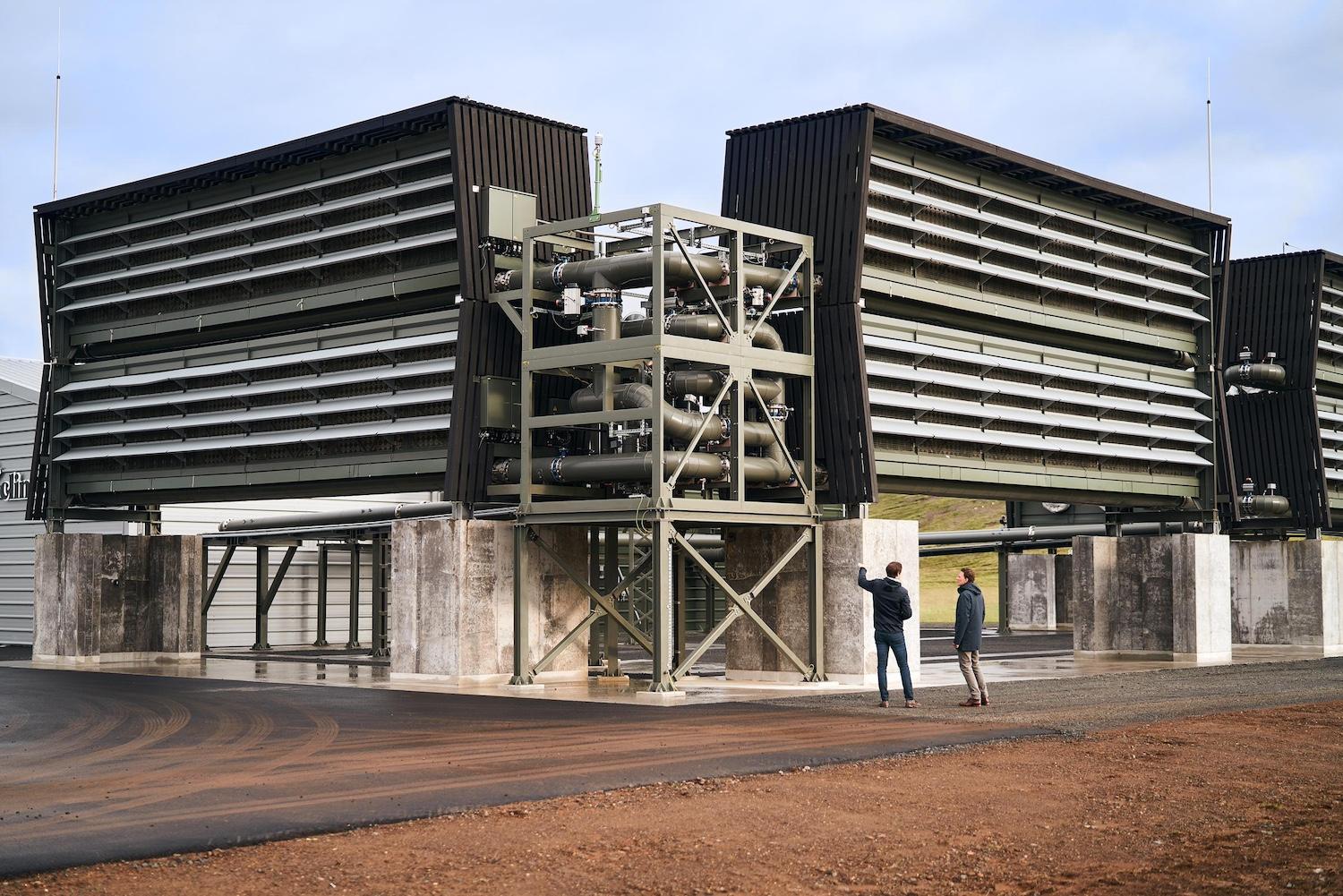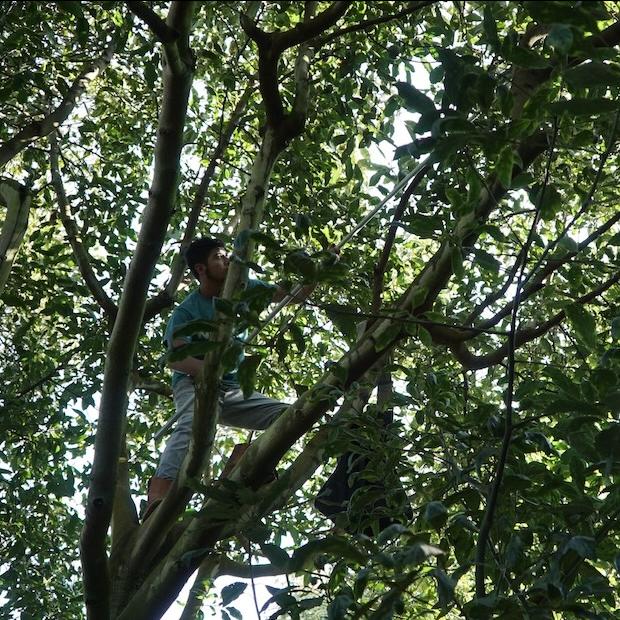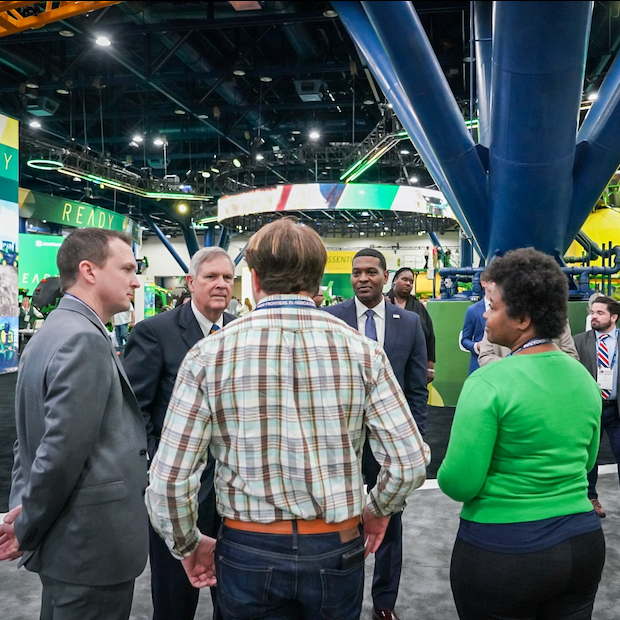Aloha’s Pa’akai Bar Proves Aligning Profit and Planet Creates Delicious Results


A farmer walks through a field of climate-resilient pongamia trees used to create Terviva's ponova oil, a key ingredient in Aloha's new pa'akai bar. (Image courtesy of Aloha)
The islands of Hawai’i are known for having some of the most spectacular beaches and clearest waters on the planet. Imagine the purest salt extracted from along these shorelines, through the most diligent process, jam-packed into a single bar.
There’s actually no need to imagine. The plant-based protein brand Aloha’s latest special-edition snack, the pa'akai protein bar, features ingredients from sustainable farms across Hawai’i — including artisanal sea salt and macadamia nuts — along with oil from the climate-resilient pongamia tree. It’s the product of collaboration, sustainable development, and genuine taste innovation.

These days, it’s not enough to simply pick up a product in the store to consume. Consumers realize the importance of understanding where their dollars are spent and how it might impact the environment. It’s important to understand what’s happening when these products are made, and the trickle-down effect not just for climate-vulnerable islands like Hawai’i, but also for the planet as a whole.
In the North, a great deal of climate science and research is taking place to build resilience against climate change. Meanwhile, in the southern tropical regions like Hawai’i, countries struggle to build the same resilience. They enjoy a special kind of vulnerability as the place where the majority of hurricanes and disaster wind systems are born.
Luckily, these regions also tend to be rich in resources that can help offset climate change and bring balance to local ecosystems. This is where Terviva’s work with the pongamia tree, and its collaboration with Aloha, come into play.
Terviva is a California-based agriculture company focused on helping farmers cultivate the climate-resilient pongamia tree around the world. The tree helps improve soil health as it grows, and it can thrive even in degraded areas across the world’s tropical climates. It produces a protein-rich legume similar to soybeans and peas that can be eaten whole or made into a cooking oil.
Oil from the pongamia tree has been used in Ayurvedic medicine and for reforestation across Asia. But Terviva brought it to the food market at scale with its ponova oil, and Aloha was the first brand to feature the oil in a mass-market product last year.

"We partner with farmers and communities around the world to harvest and grow pongamia, primarily in India, Hawai’i, Florida and Australia,” said Terviva CEO Naveen Sikka. “At the heart of what we do, we are a tree company. Planting pongamia — a climate-resilient, permanent tree crop — helps to revitalize both the land and communities which grow our food.”
These trees are harvested in the wild, by locals who benefit from the employment, but they are also replanted in highly-used farmlands to help replenish soil health and increase rainfall.
The new pa’akai bar includes Terviva’s ponova oil. For every new bar purchased, Aloha donates 10 percent of the profits to a nonprofit that provides Hawai’i’s youth with education and workforce development in the fields of natural resources, climate change mitigation and agriculture. This is essential for the climate-vulnerable Hawai’i. “Aloha’s special-edition pa’akai bar reflects our belief that local impact can drive global change,” Sikka said
As the ability to choose sustainable products and lifestyles continues to grow and the marketplace expands, documenting and replicating what works is becoming more essential. Understanding the logistics of these products helps consumers make choices. But for companies in the for-profit sector, a venture like this may seem scary, improbable and even unsustainable. In a conversation with TriplePundit, Aloha CEO Brandon Charron shared insights that could crack that myth wide open. The conversation was edited and condensed for clarity.
TriplePundit: People might think it’s difficult to get a partnership like the one between Aloha and Terviva going. What do you think could change the perception for other companies to get more involved?
Brad Charron: It wouldn't surprise me if in the not-too-distant future every food producer will be required to have a “traceable” supply chain. And not by regulatory bodies or government agencies, but stirred by consumers who want to know where their food comes from. As an entrepreneurial company, we, and those like us, who are already cognizant of the desire of their audience to learn more about “how it’s all built” have a head start and, increasingly, a leg up on competition. As consumer demand for more sustainable products increases, these kinds of “walk the talk” partnerships have even more meaning.
3p: How do these partnerships between Aloha and the sustainable farms and suppliers come about?
BC: None of it is easy. A partnership of this kind of differentiation compared to the “status quo” form of food production has to, by necessity, originate from a position of genuine interest and respect. You have to have a “creator’s mindset.” It’s hard work. It takes going the extra mile — literally. If creating this food was easy to do, everyone would do it.
Simply put, at Aloha, we’re on a mission to leave the food world better than we found it. That's why we scour the globe to find only the most delicious and good-for-you ingredients to make our bars, drinks and powders. It’s also why we’re continuously looking for forward-thinking companies to build and to co-create, those organizations that are reimagining what it means to produce food in a way that is better for our communities, and the planet.
3p: How do you decide on new products?
BC: You’d probably expect that we have a crazy, intense innovation incubator, and if you thought that, you’d be incredibly disappointed. Honestly, it’s not anything fancy, overly complex, or AI-enabled. The truth is that we just take the time to listen to our consumers and never allow compromise to come into the equation.
It’s also not about birthing something truly unique into the world. For us, it’s more important to be “trend-right” than “trendy.” The novelty of the latter can wear off pretty quickly. Our focus is on delivering familiar flavors that people love. The innovation comes into play in how and where these ingredients are sourced and what the recipe is that makes our Aloha products absolutely best-in-class.
3p: Sustainability is important when it comes to the ingredients, but how important is flavor in the making process and how do you arrive at the final taste?
BC: Flavor and, more specifically, taste is critical to everything we do. If it just tastes good, that's not good enough for me. It has to taste awesome. It has to be the best version of that flavor that we’ve ever tried. In formulating products, our product team goes through multiple iterations before it gets my final stamp of approval. This process can take anywhere from a month to, well, never. We won’t launch it if we don’t love it, and if we’re not proud of it. I call it the “first impression test.” If that particular flavor isn’t something that would lead to a second, third, fourth try of our brand, it’s just not going to work.
Once finding the right ingredients, the pa’akai bar was on the easiest end of the flavor design spectrum. It started out well and ended up being one of the most delicious flavors we’ve ever made. Perfecting the balancing act between the dark chocolate, macadamia nuts, plant-based protein blend of pumpkin seeds and brown rice with just the right amount of our hero ingredient, Hawaiian sea salt, was the challenge required to strike the perfect balance of sweet and savory. I’m proud to say, the team nailed it.

3p: Can you describe the logistics of making something like this to happen? From initiation to final inking, who calls who and what happens after?
BC: I’ve been in the business of food for what feels like a very long time. But obviously, the industry is evolving every day. In the case of Terviva, I have known Naveen for almost a quarter century. That’s a crazy amount of time. I’d been following the work that he was doing on Ponova oil and was excited to have the opportunity to help launch the first-ever commercial product featuring it.
As for the sourcing of other ingredients, we took a boots-on-the-ground approach. It's hard to know what you’re looking for in Google search. Actually, I think its pretty much impossible to do it on the internet. So I packed my bag and off we went, right to the source. I racked up quite the miles scrounging on Hawai’i until finding the right fit of partners who could bring the vision to life.
After that, we trusted our incredible Aloha product development team, who handled all of the logistics behind the scenes. We have an exceptionally high standard when it comes to our food, so the experts putting a lot of energy into ensuring that any new ingredients and partners deliver on those standards is critical to the trust our consumers expect us to deliver with each and every flavor.
3p: This new ingredient is called “pa'akai” in Hawaiian which means “sea salt” in English, but what exactly is the ingredient? Where does it come from?
BC: “Pa'akai” translates to “solid ocean” or “sea salt," an ingredient that carries cultural significance within the community. The North Pacific Ocean surrounding the Hawaiian Islands boasts some of the most undisturbed, pristine waters in the world, making it a special place to source sea salt.
First, the ocean water from almost unfathomable depths is taken through nine levels of filtration. Next, it’s pumped into special evaporators and left to dry and crystallize in the sun, a naturally occurring process that can take up to five weeks and leaves you with the chunky snowflake-like salt crystals people are accustomed to seeing. The resulting product is known to be some of the purest salt available in the world, containing more trace minerals and a lower sodium concentrate, which makes it less salty and more flavorful.
